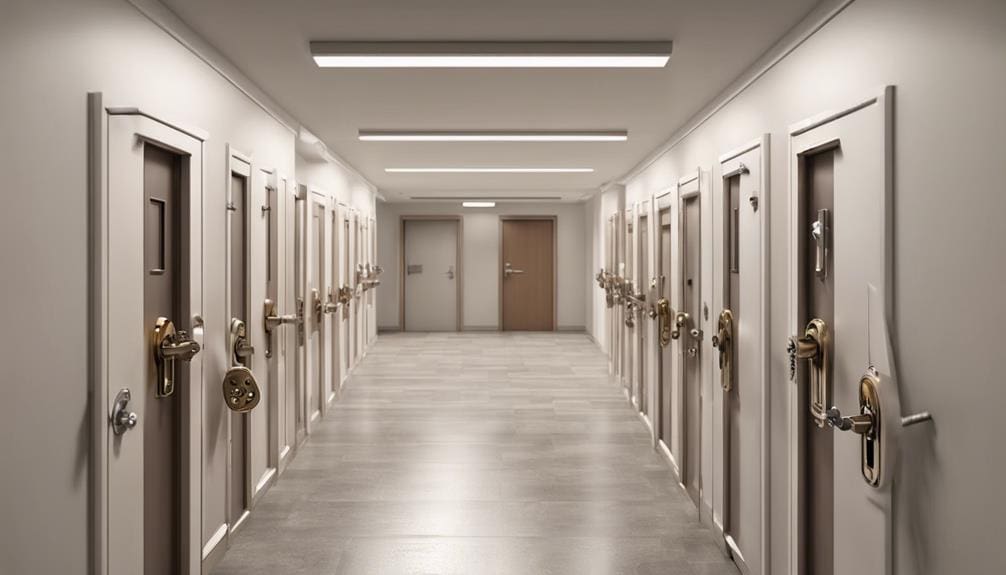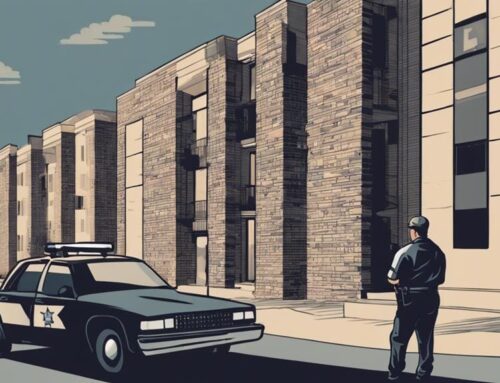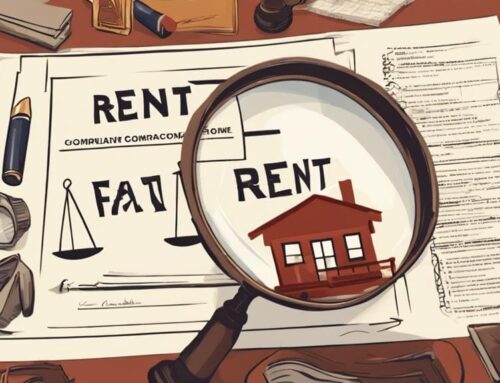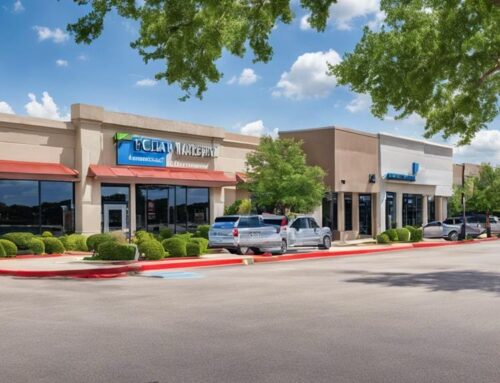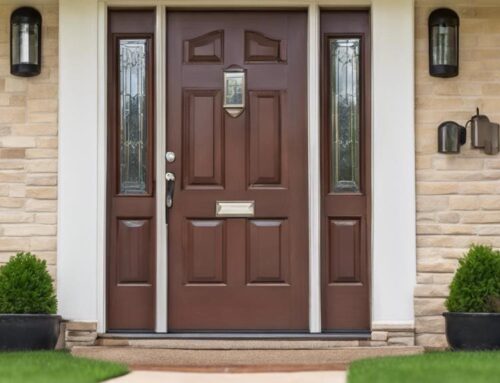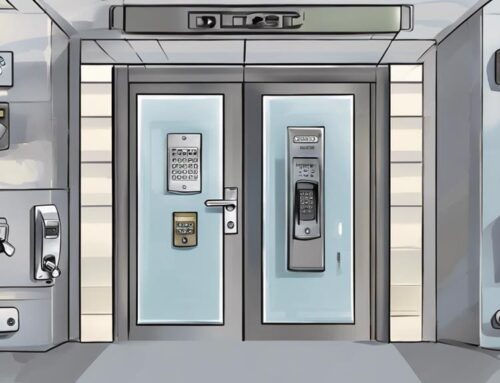In Texas, landlords must change locks and set up keyless deadbolts on exterior doors within seven days of a new tenant’s move-in. This guarantees previous occupants can’t access the property. Costs for changing locks or setting up keyless deadbolts can’t be passed on to tenants. Landlords must also secure sliding doors with pin locks and maintain functioning latches on windows. Failure to comply can lead to lease cancellations, financial penalties, and legal action. Meeting these requirements is crucial for maintaining tenant safety and legal compliance. Explore more about your responsibilities and the legal framework involved.
Key Takeaways
- Landlords must rekey all exterior door locks within seven days of a new tenant moving in, at their own expense.
- Keyless deadbolts must be installed on all exterior doors within seven days of a new tenant moving in.
- Landlords are responsible for covering the cost of both rekeying locks and installing keyless deadbolts.
- Sliding doors must have pin locks and locking handles, and exterior windows must have functioning latches.
- Tenants can terminate the lease or seek legal recourse if landlords fail to comply with Texas Property Code security requirements.
Rekeying Locks Timeline
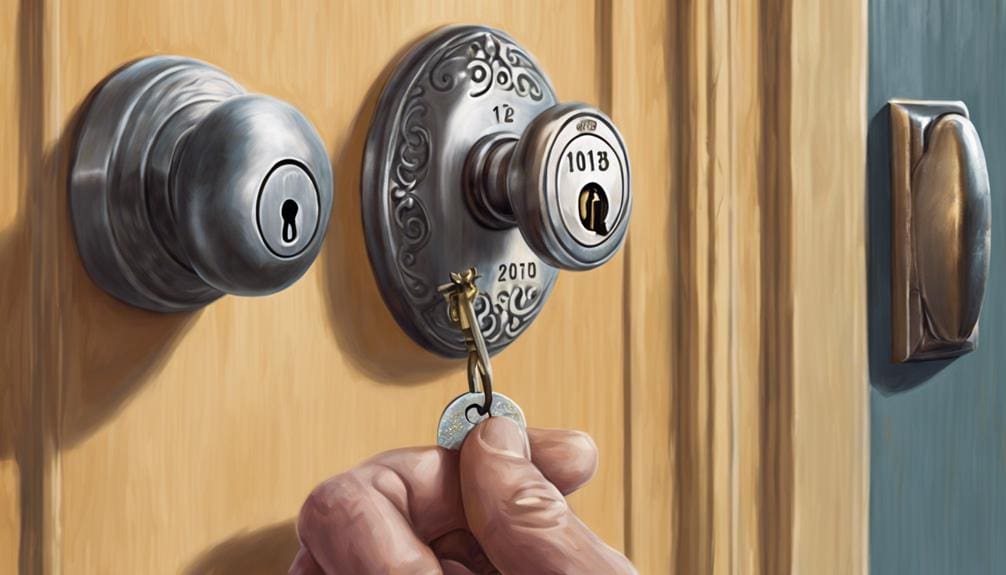
In Texas, landlords must rekey all locks on exterior doors within seven days of a new tenant moving in. This requirement ensures that you, as a tenant, have a secure living environment from the very start of your lease. The 7-day timeframe isn’t just a suggestion but a legal mandate that landlords must adhere to, emphasizing the importance of tenant safety.
Rekeying locks involves changing the internal mechanisms of the lock so that old keys no longer function, and new keys are issued exclusively to the new tenant. This process is vital in preventing unauthorized access from previous occupants or others who may have had access to the keys.
As a tenant, you should be aware that the cost of rekeying locks can’t be passed on to you; it’s the landlord’s responsibility to cover these expenses.
Keyless Deadbolt Requirements
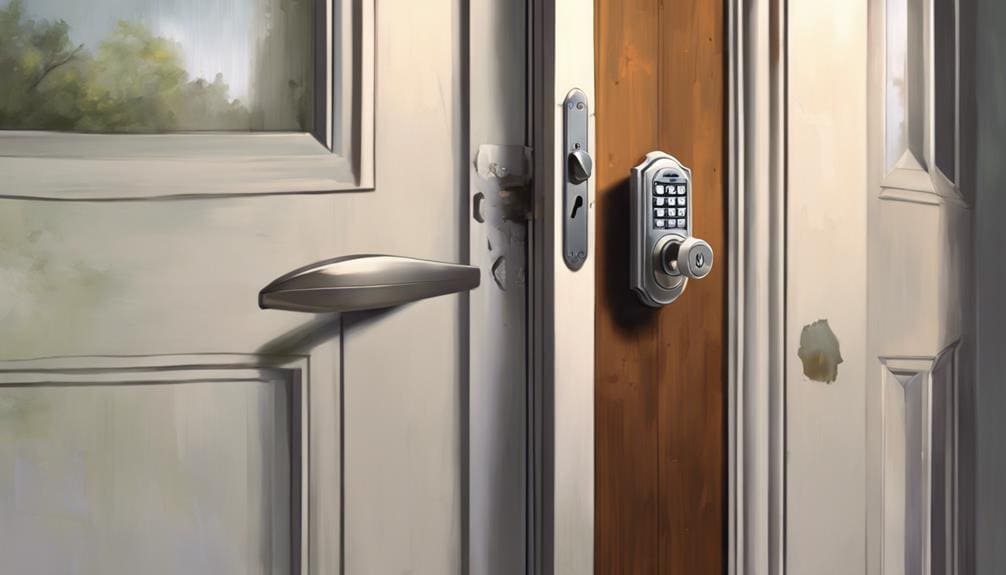
You must guarantee the installation of keyless deadbolts on all exterior doors according to Texas regulations. Compliance requires that these locks are visible only from the interior side, with installation deadlines strictly observed.
Failure to meet these requirements can result in significant legal ramifications.
Installation Timeframe Compliance
Landlords in Texas must ensure keyless deadbolts are installed on all exterior doors within seven days of a new tenant’s move-in date. This installation timeframe is essential to comply with state regulations aimed at enhancing tenant security. Texas landlords who fail to meet this requirement may face substantial legal consequences, including fines and potential liability issues.
Keyless deadbolts are mandatory for all exterior doors, and their timely installation is non-negotiable. Ensuring these locks are in place promptly not only fulfills legal obligations but also provides peace of mind for new tenants, fostering a sense of safety and community.
Key points to remember:
- Installation timeframe: Must be within seven days of tenant move-in.
- Mandatory for all exterior doors: No exceptions allowed.
- Legal consequences: Non-compliance can result in fines and legal liability.
- Security enhancement: Keyless deadbolts greatly improve tenant safety.
- No charge to tenants: It’s illegal to pass the cost of installation to tenants.
Specific Door Requirements
Every exterior door in Texas rental properties must be equipped with both a keyed deadbolt and a keyless deadbolt to comply with state security regulations. These security devices are necessary in guaranteeing tenant safety and adherence to the Texas Property Code. The keyless deadbolt, in particular, must be visible only from the interior side of the door, providing an extra layer of protection against unauthorized access.
Landlords must make sure that all exterior doors in rental properties meet these requirements. The combination of a keyed deadbolt and keyless deadbolt offers a dual security mechanism, enhancing the overall security of the property.
| Security Device | Location on Door |
|---|---|
| Keyed Deadbolt | Exterior and Interior |
| Keyless Deadbolt | Interior Only |
| Compliance Mandate | Texas Property Code |
| Required for | All Exterior Doors |
Failing to install these mandated security devices can lead to severe consequences for landlords. Adhering to these specific door requirements not only fulfills legal obligations but also fosters a sense of security and belonging among tenants. Hence, it’s essential for landlords to stay informed and compliant with these regulations, ensuring that their rental properties are both safe and legally sound.
Legal Ramifications
Failure to install essential deadbolts on exterior doors can lead to significant legal consequences, including the potential for tenants to cancel their leases. In Texas, landlords are legally required to equip all exterior doors with keyless deadbolts. This mandate aims to enhance security and provide tenants with peace of mind.
If you’re a landlord, non-compliance with these legal requirements can expose you to several risks:
- Lease cancellation: Tenants have the legal right to cancel their leases if keyless deadbolts aren’t installed.
- Financial penalties: You may face fines for failing to adhere to state regulations.
- Legal disputes: Tenants can take legal action against you, leading to costly and time-consuming court proceedings.
- Reputational damage: Non-compliance can harm your reputation, making it difficult to attract and retain tenants.
- Increased liability: Without proper security measures, you may be held liable for any security breaches or incidents.
It’s important to make sure that all exterior doors have keyless deadbolts installed within the specified timeframe. The cost of installation should be covered by you, the landlord, to meet the legal requirements.
Security Devices Installation
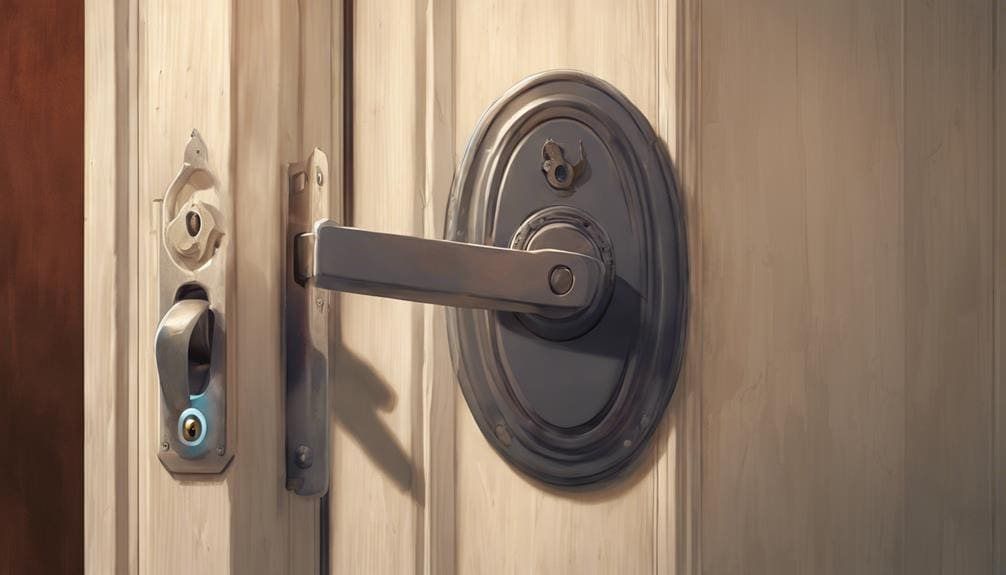
To comply with Texas regulations, you must install the following on all exterior doors:
- A keyless deadbolt and a keyed deadbolt.
- A viewing device with at least a 160° view.
For sliding glass doors, the following are required:
- A pin lock.
- A security bar or locking handle latch.
Keyless Deadbolt Requirements
Texas law mandates that all rental properties have keyless deadbolts installed on exterior doors to guarantee tenant security. These devices are essential in meeting the specific Property Code requirements for rental properties and safeguarding that tenants feel safe in their homes. Under Texas lock laws, landlords are obligated to install keyless deadbolts that are visible only from the interior side of the door. This measure provides enhanced protection against unauthorized entry and potential break-ins.
Keyless deadbolts offer several advantages:
- Enhanced Security: They greatly reduce the risk of unauthorized access.
- Tenant Peace of Mind: Knowing that keyless deadbolts are installed can make tenants feel more secure.
- Compliance with Regulations: Landlords must comply with Texas lock laws, and installing keyless deadbolts is a crucial requirement.
- Ease of Use: Tenants can lock their doors without needing a key, adding convenience.
- Visible from Interior Only: This feature ensures that the locking mechanism is tamper-proof from the outside.
Landlords must ensure these security devices are properly installed on all exterior doors. By doing so, you not only comply with legal requirements but also promote a sense of community and belonging among your tenants, knowing their security is a priority.
Door Viewer Installation
In order to protect tenant safety, landlords must install a door viewer with at least a 160° view on each exterior door. This requirement is a vital aspect of tenant security under the Texas Property Code. By providing a clear and wide field of vision, a door viewer, also known as a peephole, allows tenants to see who is outside before opening the door, thereby enhancing safety and preventing unauthorized entry.
Landlords have a clear responsibility to make sure that these door viewers are correctly installed and functional. The installation must provide an adequate field of vision for the tenant, which means it should be placed at a suitable height and offer a clear, unobstructed view.
| Requirement | Details |
|---|---|
| Angle of View | At least 160° |
| Installation Requirement | Each exterior door |
| Exceptions | Doors with glass windows offering visibility |
It’s important for landlords to comply with these regulations to avoid legal issues and guarantee their tenants feel secure. While there are exceptions for doors with glass windows that already offer visibility, most exterior doors will need a properly installed door viewer. This peephole installation is a straightforward yet necessary step in maintaining a safe living environment, aligning with the mandates of the Texas Property Code.
Sliding Door Security
Landlords must install both a pin lock and a locking handle on all sliding patio doors to comply with Texas security device regulations, thereby guaranteeing enhanced tenant safety and security.
These security devices are required to prevent unauthorized access and maintain a safe living environment for tenants. As a landlord, it’s your duty to make sure that these features are properly installed and maintained on all sliding doors within your rental property.
To stay compliant with Texas regulations, make sure you’ve addressed the following:
- Sliding door pin lock: This device prevents the door from being lifted out of its track.
- Locking handle: Provides an additional layer of security by securing the door in a closed position.
- Regular maintenance: Verify that both the pin lock and locking handle are in good working condition.
- Prompt repairs: Address any issues with the security devices immediately to avoid potential legal complications.
- Tenant education: Inform your tenants about the proper use and importance of these security devices.
Landlord Responsibilities
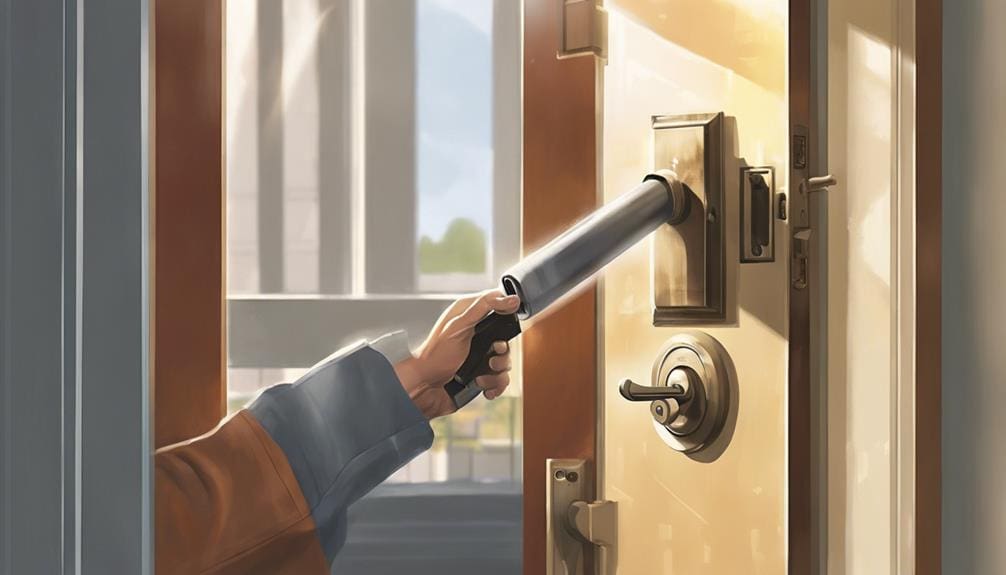
How do landlords guarantee adherence with Texas door lock regulations to fulfill their responsibilities effectively?
As a landlord, your primary duty is to secure every exterior door of your rental property with the necessary security devices. This includes installing both a keyed deadbolt and a keyless deadbolt to provide adequate security for tenants. Additionally, the landlord responsibilities extend to fitting each exterior door, including those leading to the garage, with a viewing device (peephole) that offers at least 160 degrees of view.
It’s essential to also address the security of sliding glass doors. These must be equipped with a pin lock and either a security bar or a locking handle latch to meet state compliance standards.
Guaranteeing the installation of these security devices not only fulfills your landlord responsibilities but also fosters a sense of safety and belonging for your tenants.
Legal Consequences of Non-Compliance

By failing to comply with Texas tenant door lock regulations, you risk lease termination initiated by the tenant.
Your liability exposure increases substantially if a break-in or security breach occurs due to non-compliance.
Ensuring adherence to Property Code requirements is vital to avoid lawsuits and financial penalties.
Lease Termination Risk
Failure to comply with Texas tenant door lock regulations can swiftly lead to lease termination risks and heightened legal liabilities. As a landlord, ensuring your property meets the state’s stringent lock regulations is paramount. Texas law mandates that doors must meet specific security standards and include devices required by the Property Code, such as keyless locks.
Legal consequences of non-compliance are severe. If you fail to adhere to these regulations, tenants have the right to cancel their lease without penalty. This not only disrupts your rental income but can also tarnish your reputation as a responsible property owner.
Here are the primary risks associated with non-compliance:
- Lease termination: Tenants can legally terminate their lease if the property doesn’t meet required lock standards.
- Financial damages: You may face financial penalties or be required to compensate tenants for their inconvenience.
- Legal actions: Non-compliance can lead to lawsuits, increasing your legal liabilities.
- Elevated liability: A break-in or security breach can significantly elevate your responsibility in the eyes of the law.
- Reputational damage: Persistent non-compliance can damage your standing within the rental community.
Increased Liability Exposure
Neglecting Texas tenant door lock regulations can significantly increase your liability exposure in the event of a security breach or break-in. As a landlord, non-compliance with these lock laws not only puts tenant safety at risk but also exposes you to significant legal consequences.
Should a security breach occur, tenants may hold you responsible, potentially leading to expensive lawsuits and damages.
Maintaining compliance with Texas lock laws is vital to reduce these risks. The Property Code mandates specific security devices that must be installed in rental units, and failure to follow these requirements can result in severe repercussions.
Tenants have the right to terminate their lease agreements if you ignore these regulations, further increasing your financial and legal liabilities.
To avoid these challenges, it’s crucial to uphold strict adherence to the mandated lock regulations. Regularly inspect and update all security devices as outlined in the Property Code.
If you’re unsure about compliance, seeking guidance from professionals, such as J.R. Rentals & Property Management in Copperas Cove, TX, can offer valuable advice and help you fulfill all legal obligations.
Protecting your tenants and safeguarding against legal consequences reinforces a sense of community and trust, necessary for successful property management.
Tenant Rights and Recourse
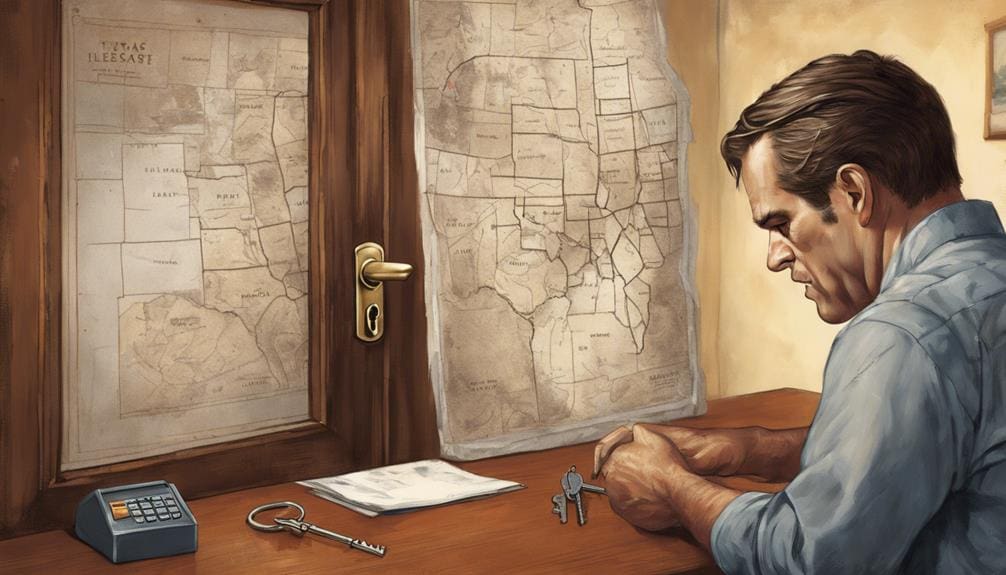
Understanding your rights and available recourse as a tenant in Texas is essential for safeguarding your security and holding landlords accountable. Texas lock laws are designed to protect tenant rights by mandating landlords to install and maintain appropriate security devices. If your landlord fails to comply, you have several avenues for legal redress to safeguard your tenant security.
Here are key points to keep in mind:
- Lock Laws: You can request lock changes at any time, and landlords must rekey or change locks within 7 days of a new tenant moving in.
- Tenant Rights: If your landlord doesn’t adhere to the lock laws, you can terminate your lease, reducing your risk in case of a break-in.
- Legal Recourse: You have the right to file a lawsuit in justice court if necessary security devices aren’t installed or repaired.
- Landlord Responsibilities: Landlords must guarantee compliance with Texas Property Code requirements to avoid legal consequences and potential lease cancellations.
- Tenant Security: Communicate any security concerns to your landlord and involve city authorities if necessary to address your rights and ensure a secure living environment.
Security Measures for Exterior Doors
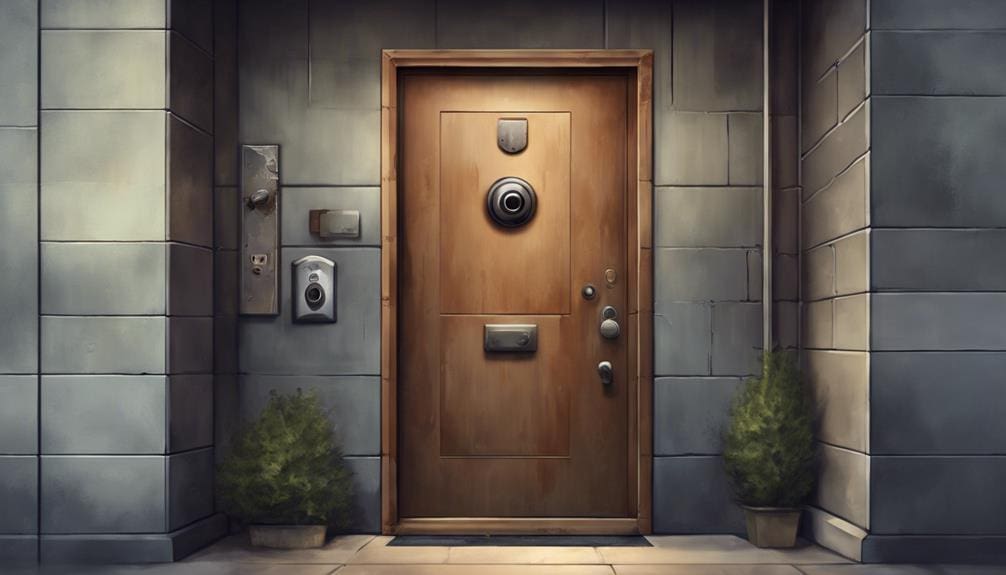
Ensuring all exterior doors have the required security measures, including keyed and keyless deadbolts as well as a viewing device, is vital for tenant safety in Texas. Each exterior door, covering front entrances, back/side doors, and garage access points, must meet these strict requirements.
A keyed deadbolt provides a strong layer of security, requiring a key to open from the outside. Complementing this, a keyless deadbolt guarantees swift egress in emergencies, enhancing overall tenant safety.
A viewing device, commonly known as a peephole, is also necessary. Texas law mandates that this device must offer a minimum 160° view. This wide-angle perspective allows tenants to identify visitors and potential threats without having to open the door, thereby adding an additional level of security.
For sliding glass doors, Texas mandates the installation of a pin lock. This specific security measure is essential in preventing unauthorized entry through these more vulnerable access points.
Adhering to these regulations not only protects tenants but also promotes a sense of belonging and security within the community. Non-compliance with these security measures can lead to lease termination, highlighting their significance in tenant-landlord agreements.
Sliding Door Security
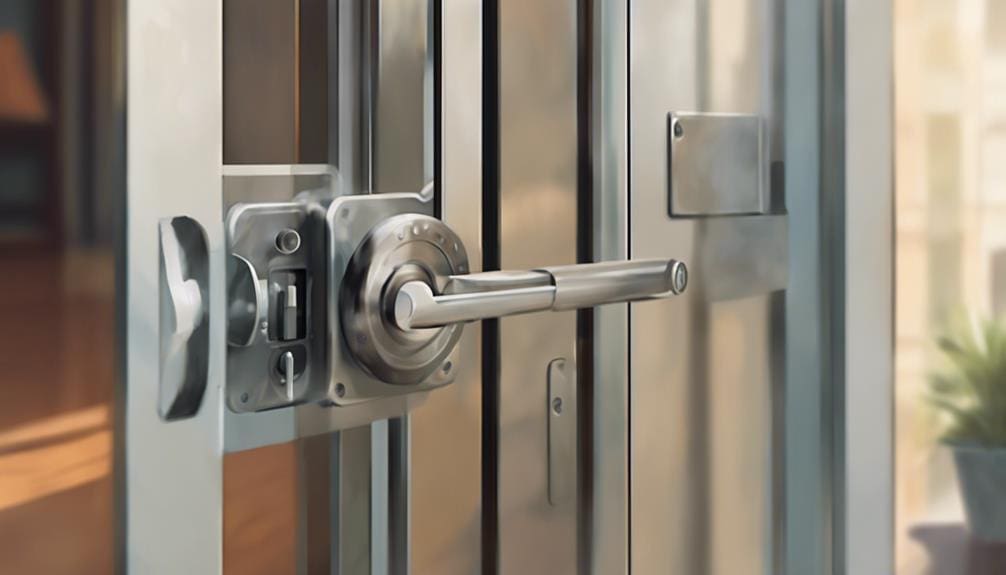
To bolster tenant safety, Texas law mandates that sliding glass exterior doors must be equipped with a pin lock. This regulation is a critical aspect of the Texas Property Code, ensuring that tenants in rental properties have a baseline level of security.
Pin locks, specifically designed for sliding glass doors, prevent the door from being lifted off its tracks or opened from the outside, adding an essential layer of security.
In addition to pin locks, sliding glass doors should also be fitted with either a security bar or a locking handle latch. These measures, collectively, are designed to enhance tenant protection and reduce the risk of unauthorized entry.
Ensuring compliance with these requirements isn’t just about following the law; it’s about fostering a sense of safety and belonging among your tenants.
Here are the key security features for sliding glass doors in Texas rental properties:
- Pin lock: Prevents the door from being lifted off its tracks.
- Security bar: Acts as a physical barrier to entry.
- Locking handle latch: Adds another layer of security.
- Compliance with Texas Property Code: Mandatory for ensuring tenant safety.
- Added security: Provides peace of mind to tenants.
Window Security Devices

Just as sliding door security is essential, every exterior window in a Texas rental property must have at least one functioning latch to prevent unauthorized entry. Confirming that each window latch is in proper working order isn’t just a recommendation; it’s a requirement under the Texas Property Code. These window security devices play a vital role in safeguarding tenant safety and overall property security.
As a tenant, you should feel secure in knowing that your living environment is protected against unauthorized entry. Landlords are obligated to install and maintain these important security devices to uphold the standards set forth by the Texas Property Code. The presence of a reliable window latch on every exterior window provides peace of mind, reinforcing the sense of community and safety within the property.
Neglecting window security can lead to serious security breaches, jeopardizing not only individual safety but also the integrity of the property as a whole. By adhering to these regulations, landlords guarantee a higher level of trust and security for their tenants.
Always verify that your windows are equipped with proper latches, contributing to a secure and welcoming living environment.
Property Code Compliance
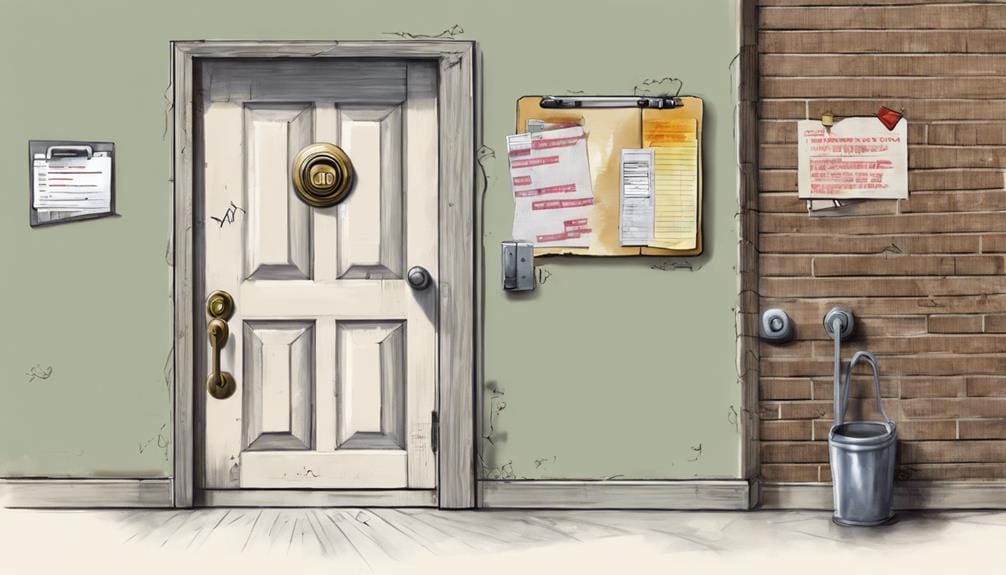
Property Code adherence mandates that landlords and property managers rigorously stick to established regulations for the installation and maintenance of locks on rental properties in Texas. Adhering to these standards guarantees both tenant safety and legal conformity. Exterior doors leading to the interior of the home must have locks that meet the specific requirements outlined in the Texas Property Code.
For thorough compliance, you must focus on the following key aspects:
- Locks: Verify all locks on exterior doors are compliant, including deadbolts, keyless bolting devices, and door viewers.
- Screws: Use stronger and longer screws for secure lock installations, enhancing the effectiveness of security devices.
- Security Devices: Install required security devices such as door chains, sliding door pin locks, and window latches as specified in Subchapter D of the Texas Property Code.
- Maintenance: Regularly inspect and maintain locks and security devices to ensure ongoing compliance and tenant safety.
- Documentation: Keep detailed records of all lock installations and maintenance activities to confirm compliance if needed.
Frequently Asked Questions
Are Landlords Required to Change Locks Between Tenants in Texas?
Yes, landlords in Texas must rekey or change all key-operated locks on exterior doors within seven days of a new tenant moving in. This rekeying process is mandatory, and landlords can’t charge you for it.
Additionally, all exterior doors, including those leading to the garage, must have keyless deadbolts. Ensuring compliance with these regulations is essential to avoid lease cancellation and maintain a secure living environment.
Are Deadbolts Required in Texas?
Just like the unyielding security of Camelot’s gates, Texas law mandates deadbolts on all exterior doors. You must guarantee both keyed and keyless deadbolts are installed.
This requirement isn’t just about compliance; it’s about safeguarding your castle and belonging to a community that values safety.
What Is Section 92.156 of the Texas Property Code?
Section 92.156 of the Texas Property Code mandates landlords rekey or change all key-operated locks on exterior doors within 7 days of a new tenant moving in.
You’ll find that landlords must cover the expenses for this service and can’t pass these costs onto tenants.
Additionally, keyless deadbolts are required on all exterior doors.
Compliance guarantees security and legal adherence, fostering trust and a sense of belonging within your rental community.
Can You Lock Out a Tenant in Texas?
Did you know that over 90% of tenant-landlord disputes involve improper lockouts?
In Texas, you can’t lock out a tenant without following the proper eviction procedures. Landlords must never change the locks or deny access without a court order. Ignoring these rules can lead to severe legal consequences.
Always respect tenants’ legal rights to access their rented property and consult a legal professional if you’re unsure.
Conclusion
By following Texas’ tenant door lock regulations, you’re not only keeping your property in line with the law but also ensuring tenant safety. Don’t let non-compliance come back to bite you.
Implementing these measures, from rekeying locks to installing security devices, demonstrates responsibility and foresight. Stay proactive and diligent—your vigilance safeguards both your tenants and your investment.
Adhering to these regulations is essential for maintaining a secure and legally compliant rental property.

